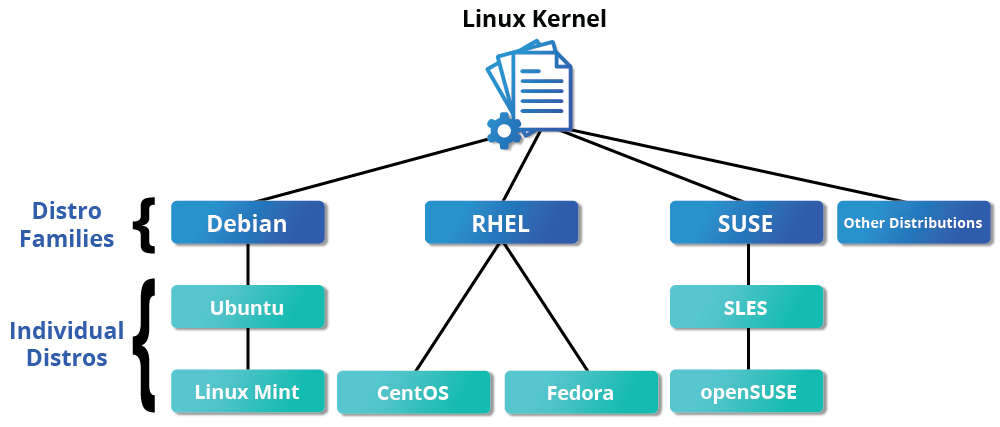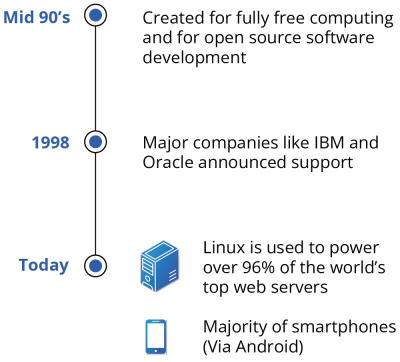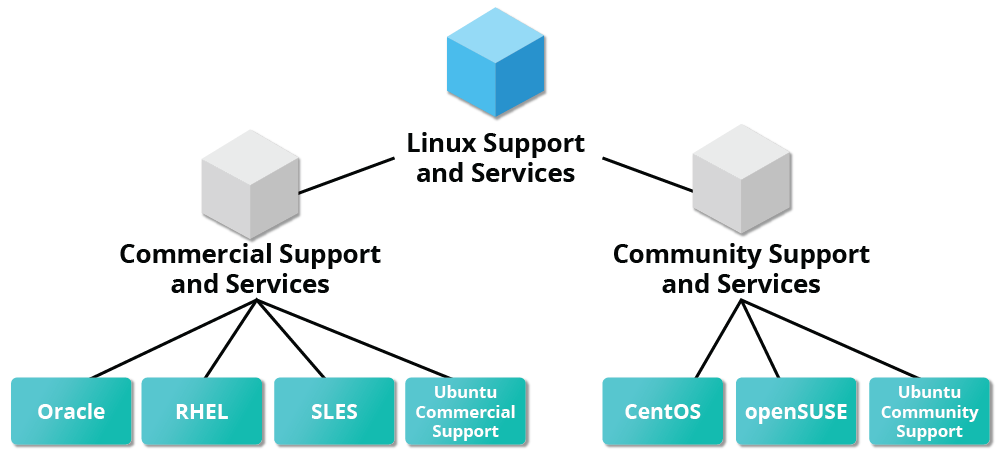⚡️ TL;DR
Linux distributions are a fascinating aspect of the tech world, representing a powerful ecosystem that supports everything from personal computers to supercomputers. In this post, we’ll dive deep into the main families of Linux distributions, explore their unique features, and understand their significance in the world of computing.
What is a Linux Distribution?
At its core, a Linux distribution is a bundle of software that includes the Linux kernel, system libraries, tools, and applications. Different distributions cater to various user needs, showcasing the versatility of Linux. Here are some of the most notable families:
- Debian: Renowned for stability and robust package management (think Ubuntu and Linux Mint).
- Red Hat: Known for enterprise-grade features and support (Fedora, CentOS).
- Arch: Celebrated for its simplicity and customization (Arch Linux, Manjaro).
- SUSE: Focused on enterprise and open-source solutions (openSUSE, SUSE Linux Enterprise).

The Red Hat Family
Key Players
Red Hat Enterprise Linux (RHEL) leads this family, accompanied by CentOS, CentOS Stream, Fedora, and Oracle Linux.
- Fedora: Acts as a testing ground for future RHEL releases, boasting a diverse community of contributors. It offers significantly more software than RHEL, making it a go-to for those who love exploration and innovation.
- CentOS: A close clone of RHEL, it shares much of its architecture and is often used in demonstrations and labs due to its cost-free nature. CentOS Stream, which replaces CentOS 8, receives updates ahead of RHEL, while the traditional CentOS would follow RHEL’s update schedule.
Here are some key facts about the Red Hat distribution family:
- Fedora serves as an upstream testing platform for RHEL.
- CentOS has been under the Red Hat umbrella since 2014, ensuring compatibility and support.
- RHEL/CentOS 8 Stream uses a heavily patched kernel version 4.18, while RHEL/CentOS 9 Stream utilizes version 5.14.
- RHEL supports multiple hardware platforms and uses
dnf, an RPM-based package manager, for software management.
The SUSE Family
SUSE Linux Enterprise Server (SLES) and openSUSE have a close relationship, similar to that of RHEL and Fedora.
openSUSE is a free version serves as a great reference for users, and much of what you learn here applies to SLES.
- SLES acts as the upstream for openSUSE.
- The kernel version used in openSUSE Leap 15.4 is 5.14.
- It employs the
zypperpackage manager and includes the YaST application for system administration.
The Debian Family
Debian is a foundational distribution for several others, including Ubuntu and Linux Mint. It’s celebrated for its strong focus on stability and a massive software repository.
Ubuntu aimed at striking a balance between long-term stability and user-friendliness, it draws most of its packages from Debian’s stable branch.
- Debian is upstream for Ubuntu, which in turn is upstream for Linux Mint.
- Ubuntu 22.04 LTS utilizes kernel version 5.19 and is a favorite for cloud deployments.
- Debian and Ubuntu differ visually, even though Ubuntu is built on Debian.
A Brief History of Linux
Linux, an open-source operating system, originated in 1991 when Linus Torvalds, a student in Helsinki, began developing his kernel. With a collaborative spirit, he combined it with components from the GNU project, leading to the creation of complete systems known as Linux distributions.
Since its re-licensing under the GPL in 1992, Linux has grown into a powerhouse, currently powering over half of the servers on the Internet and the majority of smartphones via Android. It’s also the backbone for 90% of public cloud workloads.

Linux Philosophy
Linux is not just an operating system; it embodies a philosophy of collaboration and openness. Developers from all around the world contribute, fueled by the desire to innovate and share knowledge. The hierarchical filesystem, multitasking capabilities, and extensive user management make Linux a versatile choice for many.
If you ever run into challenges while configuring a Linux server, the vibrant Linux community is ready to help! You can engage through:
- Discussion forums
- Local Linux groups
- IRC software like WeeChat and HexChat
- Collaborative on GitHub
- Community events like Hackathons and Open Source Summits
The Future of Linux Distributions
With an array of distributions available, organizations often lean towards commercially-supported options like Red Hat, SUSE, and Canonical (Ubuntu). Alternatives like CentOS, Alma Linux, and Rocky Linux have emerged, offering similar functionalities to RHEL.

Whether you’re a developer, system administrator, or just curious about Linux, understanding these families opens the door to a world of possibilities. Thanks for joining me on this journey through the world of Linux distributions! 🐧